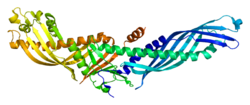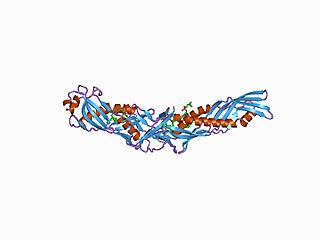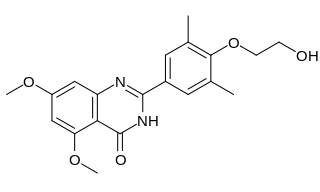[[<div style="display:block; width:60px; height:0px; overflow:hidden; position:relative; left:128.8px; top:130.7px; background:transparent; border-top:3px blue solid"></div>]]
[[<div style="display:block; width:50.5px; height:0px; overflow:hidden; position:relative; left:348.0px; top:155.5px; background:transparent; border-top:3px blue solid"></div>]]
[[<div style="display:block; width:60px; height:0px; overflow:hidden; position:relative; left:396.2px; top:189.7px; background:transparent; border-top:3px blue solid"></div>]]
[[<div style="display:block; width:60px; height:0px; overflow:hidden; position:relative; left:664.0px; top:146.8px; background:transparent; border-top:3px blue solid"></div>]]
[[<div style="display:block; width:60px; height:0px; overflow:hidden; position:relative; left:159.2px; top:320.3px; background:transparent; border-top:3px blue solid"></div>]]
[[<div style="display:block; width:60px; height:0px; overflow:hidden; position:relative; left:446.0px; top:322.8px; background:transparent; border-top:3px blue solid"></div>]]
[[<div style="display:block; width:60px; height:0px; overflow:hidden; position:relative; left:287.5px; top:320.0px; background:transparent; border-top:3px blue solid"></div>]]
[[<div style="display:block; width:60px; height:0px; overflow:hidden; position:relative; left:359.0px; top:348.5px; background:transparent; border-top:3px blue solid"></div>]]
[[<div style="display:block; width:60px; height:0px; overflow:hidden; position:relative; left:207.3px; top:403.0px; background:transparent; border-top:3px blue solid"></div>]]
[[<div style="display:block; width:60px; height:0px; overflow:hidden; position:relative; left:281.3px; top:440.8px; background:transparent; border-top:3px blue solid"></div>]]
[[<div style="display:block; width:60px; height:0px; overflow:hidden; position:relative; left:303.3px; top:498.5px; background:transparent; border-top:3px blue solid"></div>]]
[[<div style="display:block; width:60px; height:0px; overflow:hidden; position:relative; left:304.3px; top:611.3px; background:transparent; border-top:3px blue solid"></div>]]
[[<div style="display:block; width:60px; height:0px; overflow:hidden; position:relative; left:522.2px; top:456.2px; background:transparent; border-top:3px blue solid"></div>]]
[[<div style="display:block; width:60px; height:0px; overflow:hidden; position:relative; left:468.2px; top:541px; background:transparent; border-top:3px blue solid"></div>]]
[[<div style="display:block; width:60.0px; height:0px; overflow:hidden; position:relative; left:608.7px; top:424.8px; background:transparent; border-top:3px blue solid"></div>]]
[[<div style="display:block; width:60.0px; height:0px; overflow:hidden; position:relative; left:608.7px; top:404.8px; background:transparent; border-top:3px blue solid"></div>]]
[[<div style="display:block; width:60px; height:0px; overflow:hidden; position:relative; left:668.7px; top:404.8px; background:transparent; border-top:3px blue solid"></div>]]
[[<div style="display:block; width:60.0px; height:0px; overflow:hidden; position:relative; left:668.7px; top:424.8px; background:transparent; border-top:3px blue solid"></div>]]
[[<div style="display:block; width:60px; height:0px; overflow:hidden; position:relative; left:522.2px; top:436.2px; background:transparent; border-top:3px blue solid"></div>]]
[[<div style="display:block; width:93.3px; height:0px; overflow:hidden; position:relative; left:268.3px; top:222.5px; background:transparent; border-top:3px blue solid"></div>]]
[[<div style="display:block; width:69.2px; height:0px; overflow:hidden; position:relative; left:280.8px; top:108.3px; background:transparent; border-top:3px blue solid"></div>]]
[[<div style="display:block; width:68.3px; height:0px; overflow:hidden; position:relative; left:194.2px; top:623.7px; background:transparent; border-top:3px blue solid"></div>]]
[[<div style="display:block; width:65px; height:0px; overflow:hidden; position:relative; left:50.3px; top:76px; background:transparent; border-top:3px blue solid"></div>]]
[[<div style="display:block; width:85px; height:0px; overflow:hidden; position:relative; left:470.0px; top:223px; background:transparent; border-top:3px blue solid"></div>]]
[[<div style="display:block; width:55px; height:0px; overflow:hidden; position:relative; left:410.5px; top:118.5px; background:transparent; border-top:3px blue solid"></div>]]
[[<div style="display:block; width:74.5px; height:0px; overflow:hidden; position:relative; left:559.0px; top:199px; background:transparent; border-top:3px blue solid"></div>]]
[[<div style="display:block; width:80px; height:0px; overflow:hidden; position:relative; left:654.5px; top:235px; background:transparent; border-top:3px blue solid"></div>]]
[[<div style="display:block; width:32.0px; height:0px; overflow:hidden; position:relative; left:134.5px; top:366.5px; background:transparent; border-top:3px blue solid"></div>]]
[[<div style="display:block; width:32.0px; height:0px; overflow:hidden; position:relative; left:299.0px; top:366.5px; background:transparent; border-top:3px blue solid"></div>]]
[[<div style="display:block; width:32.0px; height:0px; overflow:hidden; position:relative; left:414.5px; top:387.5px; background:transparent; border-top:3px blue solid"></div>]]
[[<div style="display:block; width:32.0px; height:0px; overflow:hidden; position:relative; left:386.0px; top:451.5px; background:transparent; border-top:3px blue solid"></div>]]
[[<div style="display:block; width:60px; height:0px; overflow:hidden; position:relative; left:125.3px; top:560px; background:transparent; border-top:3px blue solid"></div>]]
[[<div style="display:block; width:60px; height:0px; overflow:hidden; position:relative; left:125.3px; top:580px; background:transparent; border-top:3px blue solid"></div>]]
[[<div style="display:block; width:60px; height:0px; overflow:hidden; position:relative; left:413.2px; top:610.3px; background:transparent; border-top:3px blue solid"></div>]]
[[<div style="display:block; width:68.3px; height:0px; overflow:hidden; position:relative; left:508.7px; top:625.7px; background:transparent; border-top:3px blue solid"></div>]]
[[<div style="display:block; width:60.0px; height:0px; overflow:hidden; position:relative; left:608.7px; top:444.8px; background:transparent; border-top:3px blue solid"></div>]]
[[<div style="display:block; width:60.0px; height:0px; overflow:hidden; position:relative; left:668.7px; top:444.8px; background:transparent; border-top:3px blue solid"></div>]]
[[<div style="display:block; width:49px; height:0px; overflow:hidden; position:relative; left:572.3px; top:319px; background:transparent; border-top:3px blue solid"></div>]]
[[<div style="display:block; width:46px; height:0px; overflow:hidden; position:relative; left:582.5px; top:100.5px; background:transparent; border-top:3px blue solid"></div>]]
[[<div style="display:block; width:67px; height:0px; overflow:hidden; position:relative; left:127.0px; top:223px; background:transparent; border-top:3px blue solid"></div>]]
[[<div style="display:block; width:50.8px; height:0px; overflow:hidden; position:relative; left:40.3px; top:250px; background:transparent; border-top:3px blue solid"></div>]]
[[<div style="display:block; width:43px; height:0px; overflow:hidden; position:relative; left:202.0px; top:186px; background:transparent; border-top:3px blue solid"></div>]]
[[<div style="display:block; width:53.8px; height:0px; overflow:hidden; position:relative; left:497.8px; top:118.8px; background:transparent; border-top:3px blue solid"></div>]]
[[<div style="display:block; width:102px; height:0px; overflow:hidden; position:relative; left:430.5px; top:80.5px; background:transparent; border-top:3px blue solid"></div>]]
[[<div style="display:block; width:49px; height:0px; overflow:hidden; position:relative; left:572.3px; top:299px; background:transparent; border-top:3px blue solid"></div>]]
[[<div style="display:block; width:68.3px; height:0px; overflow:hidden; position:relative; left:359.2px; top:545.2px; background:transparent; border-top:3px blue solid"></div>]]
[[<div style="display:block; width:60px; height:0px; overflow:hidden; position:relative; left:522.2px; top:476.2px; background:transparent; border-top:3px blue solid"></div>]]
[[<div style="display:block; width:80px; height:0px; overflow:hidden; position:relative; left:348.2px; top:670.8px; background:transparent; border-top:3px blue solid"></div>]]
[[<div style="display:block; width:80px; height:0px; overflow:hidden; position:relative; left:348.2px; top:690.8px; background:transparent; border-top:3px blue solid"></div>]]
[[<div style="display:block; width:53px; height:12px; overflow:hidden; position:relative; left:281.3px; top:423.8px; background:transparent; border:4px black solid"></div>]]


















